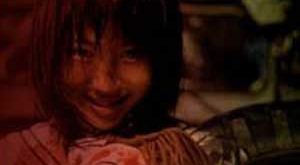 JAPANESE HORROR CINEMA (PAPERBACK)
JAPANESE HORROR CINEMA (PAPERBACK)
Author Jay McRoy
Published by University of Hawaii Press
Publication Date: 2005
Format: Black /White – 240 pages
Price: $28.00
Author Jay Mcroy is a pretty smart guy. In “Japanese Horror Cinema” his latest book, he looks at the Asian culture (Japanese specifically) with a careful eye of detail, tight analogies and perspectives of what it all means. For casual shoppers this book may reach way over you level of usual reading as it delves into the college level philosophies that only professors who sit sharing mental notes over a lattee about tropes, traits and traditions may fully grasp to be able to converse with full understanding. This book is is not your consumer based read. It’s meant for intellectuals or deep thinkers to engage and dig a bit deeper into the subtexts of films, there meanings and there influence of the world.
As a reviewer, I found myself starting to take interest and then being lost in words and theories that i didn’t have time to look up. Though that doesn’t make this a bad read, it just means it will take longer to get your flow. It appears that each chapter is more or less its own case study and deep analogy over a particular area of interest. For instance we have chapters such as: “Japanese: under western eyes: social class and global culture in Miike Takishis Audition”. Which exhaustingly looks at how”Audition” has effected the film movement for Asian films and the study of film torture with violence on screen. . Another is titled “Case Study: Ishii Takashis Freeze me and the Rape Revenge film”. A film I’ve yet to see but, now have inspired interest with its importance to the Asian Film movement. On a lighter note, there is a pretty good filmography that accompanies the end of the book. This is welcome portion demanding readers to investigate and track down some of these films for themselves. Then you can run back to the academic analogy and compare notes on a much better level. If you are expecting a “review book” then this is not really that kind of book. Those who seek to compare relationships between western and eastern films, the genre’s dominant aesthetic, apocalyptic rhetoric or social impacts will find much to dive into here.
Jay gives a thorough examination on significant trends and themes within Japanese horror cinema. As its summary states: “The book examines the genre’s dominant aesthetic, cultural, political and technological underpinnings”, which I couldn’t say it better. Though each is presented in pure academic studies with tight essays by various authors who seem to gage more towards the sociologically rather than the cinematography that most books tend to focus on.
The popularity of these titles has a tendency to strip away the contentious ideas in favor of shock and awe. Though rooted in deep culture there is much more than meets the eye. Of course the most brilliant of works are analyzed for there inherit influence and historical aspects. Narrative complexities are somewhat of a norm for these films which tend to reflect subconscious fears that are evident over international borders. Though keep in mind these are all opinions of the author submissions rather than fact for fact verification through director/ writer interviews that could potentially yield difference of opinion and plot analogy results.
Viewers seeking clarification may find better results through online forums than review of chapters for reasons of overcomplexity in explanations. Sometimes an idea can be overanalyzed past the point of it’s inherited entertainment value and this is what I’m afraid may be a downfall for interested readers. My advice is to find your focus of specific interests in this book rather than a front to back cover session. As you may walk away with less from more if not.
This is a well written, deeply thought out publication though its not light reading so make sure you give yourself time find an environment that allows you concentration so you can get the best out it.
Available from University of Hawaii Press
Also available from www.amazon.com
 Horror News | HNN Official Site | Horror Movies,Trailers, Reviews
Horror News | HNN Official Site | Horror Movies,Trailers, Reviews

